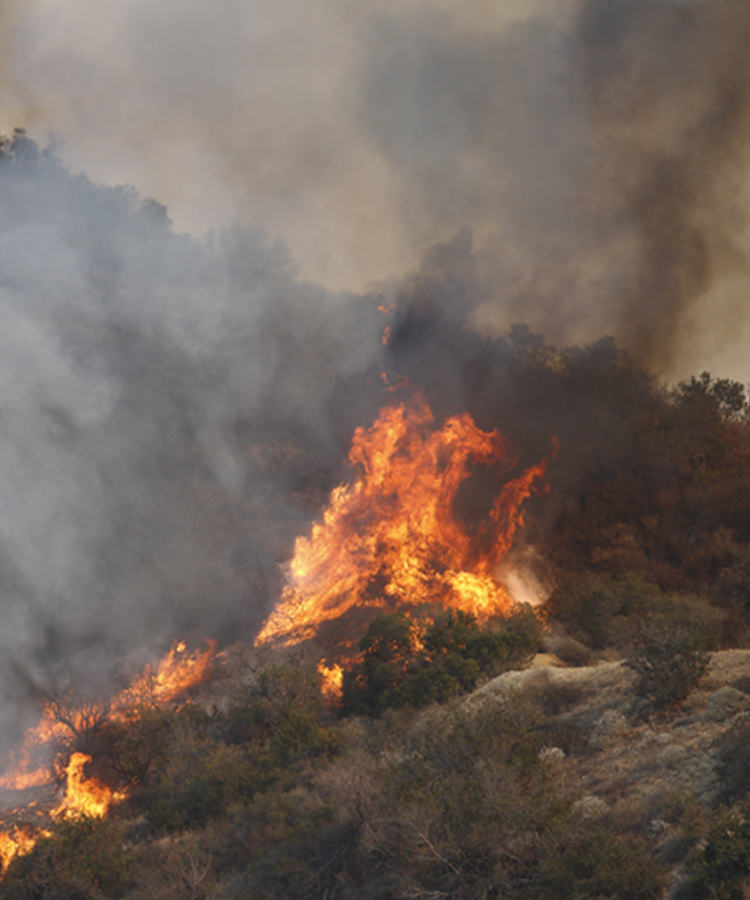Multiple wildfires wreaked devastation throughout California’s Napa and Sonoma counties after sparking late in the night of Sunday, October 8, causing at least 42 fatalities, massive evacuations, and widespread damage to homes, wineries, and businesses.
Caused by dry conditions, high temperatures, and strong winds, 15 large fires and multiple smaller blazes spread throughout northern California. The two largest fires, burning a combined 80,000 acres, were the Atlas Peak fire in Napa County and the Tubbs fire in Sonoma County. The Atlas Peak fire spread from the Atlas Peak and Stags Leap areas in Napa’s eastern hills, reportedly jumping the famed Silverado Trail and threatening the northern limits of the city of Napa. The Tubbs fire stretched from outside Calistoga into Sonoma County, causing widespread damage north of Santa Rosa and in the city itself, destroying entire neighborhoods after jumping busy Highway 101. Wildfires also threatened Kenwood, Carneros, Glen Ellen, Bennett Valley, and more.
At least 42 died in four counties, making these fires some of the deadliest in California’s recent history, and the death toll could rise, as dozens more remain missing. Over 50,000 were evacuated, many people roused from sleep to flee in the early hours of Monday morning. California Governor Jerry Brown has declared a state of emergency in Napa, Sonoma, Yuba, Butte, Lake, Mendocino, Nevada, and Orange counties, and the Federal Emergency Management Agency (FEMA) has approved federal disaster aid for the affected areas. An air quality advisory was issued for the San Francisco Bay Area due to smoke from the wildfires.
After “red flag” conditions prompted another series of evacuations Wednesday, including one for the entire city of Calistoga, winds thankfully eased Thursday morning. While it’s unclear what sparked these wildfires, San Francisco-based utility PG&E has acknowledged that extreme wind gusts downed multiple power lines Sunday evening, a situation that could potentially start a blaze.
With many residents unable to return to homes and businesses, the toll of damages is still being assessed. Signorello Estate Winery in Napa and Paradise Ridge in Sonoma have both reportedly been destroyed, as have Frey Vineyards Winery and Oster Wine Cellars in Mendocino, among others. Historic properties like Stags’ Leap Winery (Napa), Mayacamas Vineyards (Napa), Chateau St. Jean (Sonoma), Gundlach Bundschu Winery (Sonoma), and more were damaged. Despite photos of William Hill’s sign being burned, the winery itself sustained comparatively minor injury. Over 3,500 buildings, including homes, businesses, and schools, have reportedly been burned, and major hotels, restaurants, and resorts such as the Fountaingrove Inn, Hilton Sonoma Wine Country hotel, and Willi’s Wine Bar were destroyed.
Most winemakers in both Napa and Sonoma are still undergoing harvest, and harvest continues in neighboring regions unaffected by the blaze, vineyard workers wearing air masks for safety. Over two dozen vineyard workers were airlifted from Atlas Peak when the wildfire broke out suddenly on Sunday night. Wineries that remain undamaged must still work to prevent smoke damage to fermentations that were recently completed or already underway, many fighting against power outages.
For information on how to help victims of the northern California wildfires, VinePair has compiled a list of initiatives here.
